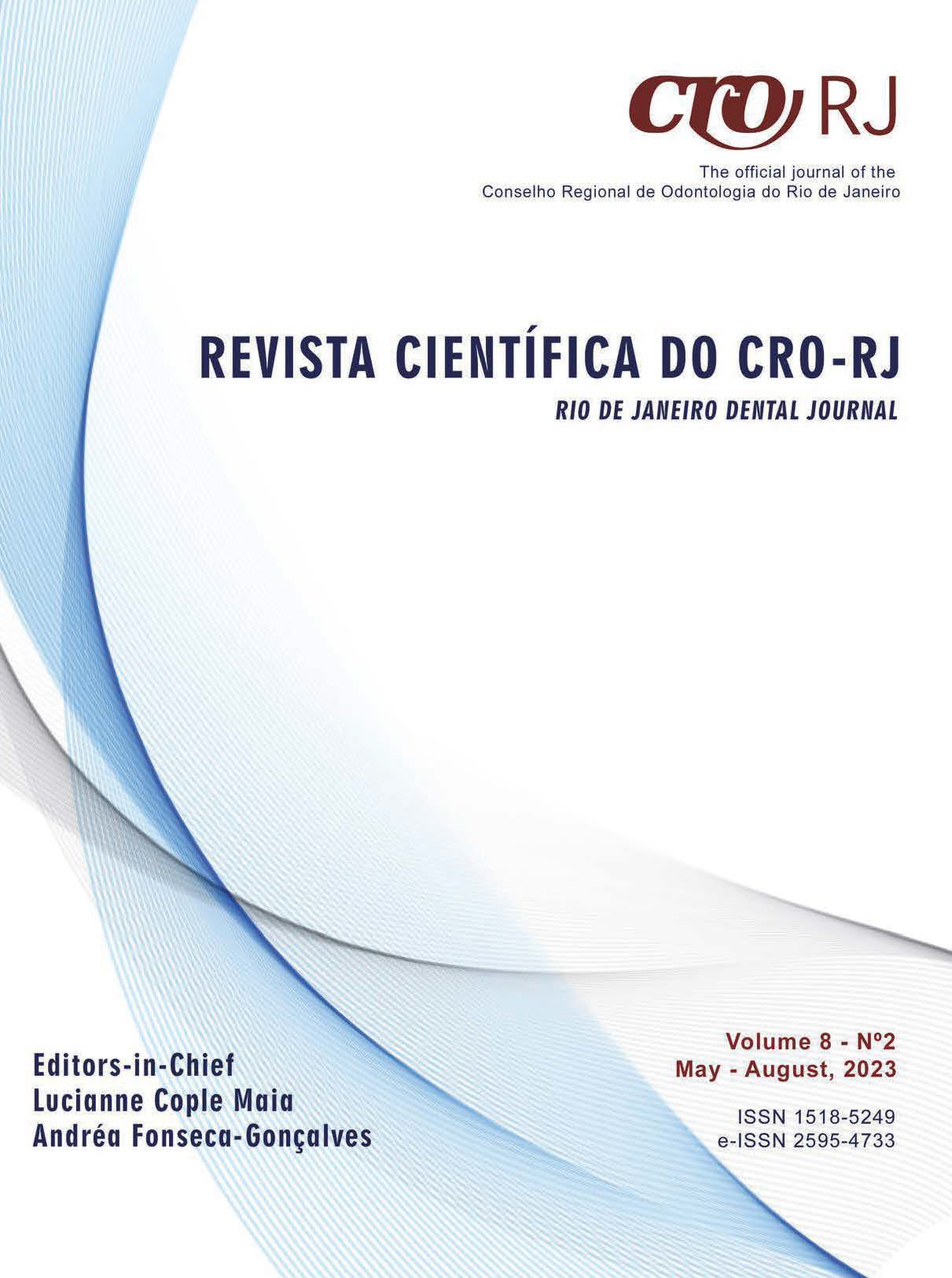PREVALÊNCIA DE LESÕES PERIAPICAIS EM INCISIVOS DECÍDUOS SUPERIORES COM TRAUMATISMOS DENTÁRIOS
DOI:
https://doi.org/10.29327/244963.8.2-3Keywords:
Dental injuries, Deciduous tooth, Incisor, Pediatric DentistryAbstract
Objective: this study aimed to evaluate the prevalence of periapical lesions in maxillary deciduous incisors with dental trauma (DT) and to associate this sequel to the type of DT. Materials and Methods: this is a cross-sectional study in which an analysis of the periapical radiographs of the medical records, from a Dental Trauma Care Program (DTCP), was carried out independently by two researchers. Patients aged up to 6 years who underwent DT in deciduous teeth who were seen between 2010 and 2015 and who contained complete data and digitized radiographs were selected. The 4 upper incisors of each child who suffered DT in this region were radiographically evaluated. Data were tabulated in a statistical program (SPSS version 20.0), considering p<0.05, using statistical tests of Chi- square and Fisher’s Exact. Results: a total of 95 children’s records were evaluated and 380 teeth were included. Of the 380 teeth included in this sample, 158 (41.60%) presented some type of DT; and of these, 40 (25.31%) presented a periapical lesion. Subluxation occurred in 12.09% (n=19) of the DT cases and in this condition the highest number of periapical lesions occurred (47.37%) (p=0.018). Conclusion: it can be concluded that there is a high prevalence of development of periapical lesions in deciduous teeth after DT. Among the types of DT, subluxation, despite being a low-intensity trauma, was the type of DT that most developed periapical lesion sequelae.
Downloads
Published
How to Cite
Issue
Section
License
Copyright (c) 2024 Revista Científica do CRO-RJ (Rio de Janeiro Dental Journal)

This work is licensed under a Creative Commons Attribution-NonCommercial-NoDerivatives 4.0 International License.


